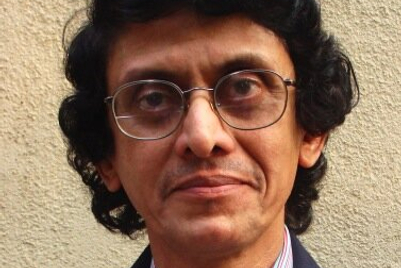
Most of us have seen that regions shown as part of India in maps published by the Government of India, are shown as parts of Pakistan, or China or merely ‘disputed’, in other maps.
Clearly, both sets of maps cannot be correct… and the map is not necessarily the territory. In fact often, one knows that the map does NOT reflect the territory.
The problem however, is that often the lack of congruence is forgotten and decision makers focus on the map, not the territory.
Such confusion is also common in the marketing and branding landscape.
Testing advertising
Consider pre-tests for commercials. The industry has created various models of how advertising works. The models assume that consumers receive, process and respond to advertising in a certain way. This ‘map’ becomes the basis of creating pre-testing methods for ads.
The key thing is that the pre-tests measure the performance of an ad with reference to these metrics.
Over a period of time, the metrics gain a life of their own, become the bell that triggers the salivary glands of the Pavlovian ad-creator. And unfortunately, the people who write the scripts start writing for the test.
The ‘map’ that was initially created as a surrogate for the territory, becomes an end in itself, and eclipses the territory.
You do the math
The same problem gets multiplied (if one may use a mathematical pun) in exercises using spreadsheets.
Take the drive towards ‘aggressive targets’. I remember a marketer involved in the launch of an international beverage brand telling me a story about how this can make things go awry. The international marketing head of the company was not happy with the sales targets worked out by the Indian JV, and wanted them to be “more ambitious”. He suggested increasing the targeted per capita consumption target from ‘n’ to ‘n plus 1’.
My friend said, “I don’t think the guy realized that with a casual change in one cell of the spreadsheet, he was adding a billion bottles for us to sell each year!”
But on the ‘map’ it must have looked so simple and logical – unhampered as it was with the heat and dust of the marketplace.
Differentiation on paper
The other big danger of confusing the paper reality with the real article is that we see differences –and differentiation – magnified manifold.
When concepts are tested, they often are couched in language that is consciously and one-sidedly complimentary to the concept. For instance let’s look at a concept for a new product to a consumer, say about “a new shampoo with the goodness of natural herbs that will stop hair fall and keep your hair looking great”.
Now, this is a no-brainer in its obvious appeal. So the research will show a high “willingness to try” this product. Ignoring the territorial truth that there are perhaps a few dozen products offering exactly the same cocktail! And while the concept may get high scores, it really doesn’t have much of a chance in the real world.
Valuation
The paper-mirage is of course at its finest in the valuation game. The facts of the case, if one only were to step back for a moment, would clearly show that several business ideas have NO hope of ever making money. (One good test of this, which often seems to be ignored, is this simple question: Will anyone ever pay anything for this thingybob?)
And yet the businesses attract high valuations. One can only see this as a Ponzi scheme where hope lies in the expectation that one can pass this hot potato into someone else’s hands.
Provability and Truth
There is a truth articulated by the renowned mathematician Kurt Godel that offers a way to see things more clearly.
Godel’s first Incompleteness Theorem states that, “for any consistent… formal theory… there is an (arithmetical) statement that is true but not provable in the theory”.
In short that there are truths that are obvious, but are not ‘provable’.
But you know that in your gut, right? Now if only we didn’t let the ‘maps’ guide us into the valley of death.
Anand Halve is co-founder, Chlorophyll. He can be contacted at [email protected]


.jpg&h=334&w=500&q=100&v=20250320&c=1)
.jpg&h=334&w=500&q=100&v=20250320&c=1)



.jpg&h=334&w=500&q=100&v=20250320&c=1)

.jpg&h=334&w=500&q=100&v=20250320&c=1)




.jpg&h=268&w=401&q=100&v=20250320&c=1)

.jpg&h=268&w=401&q=100&v=20250320&c=1)
.jpg&h=268&w=401&q=100&v=20250320&c=1)

.jpg&h=268&w=401&q=100&v=20250320&c=1)
